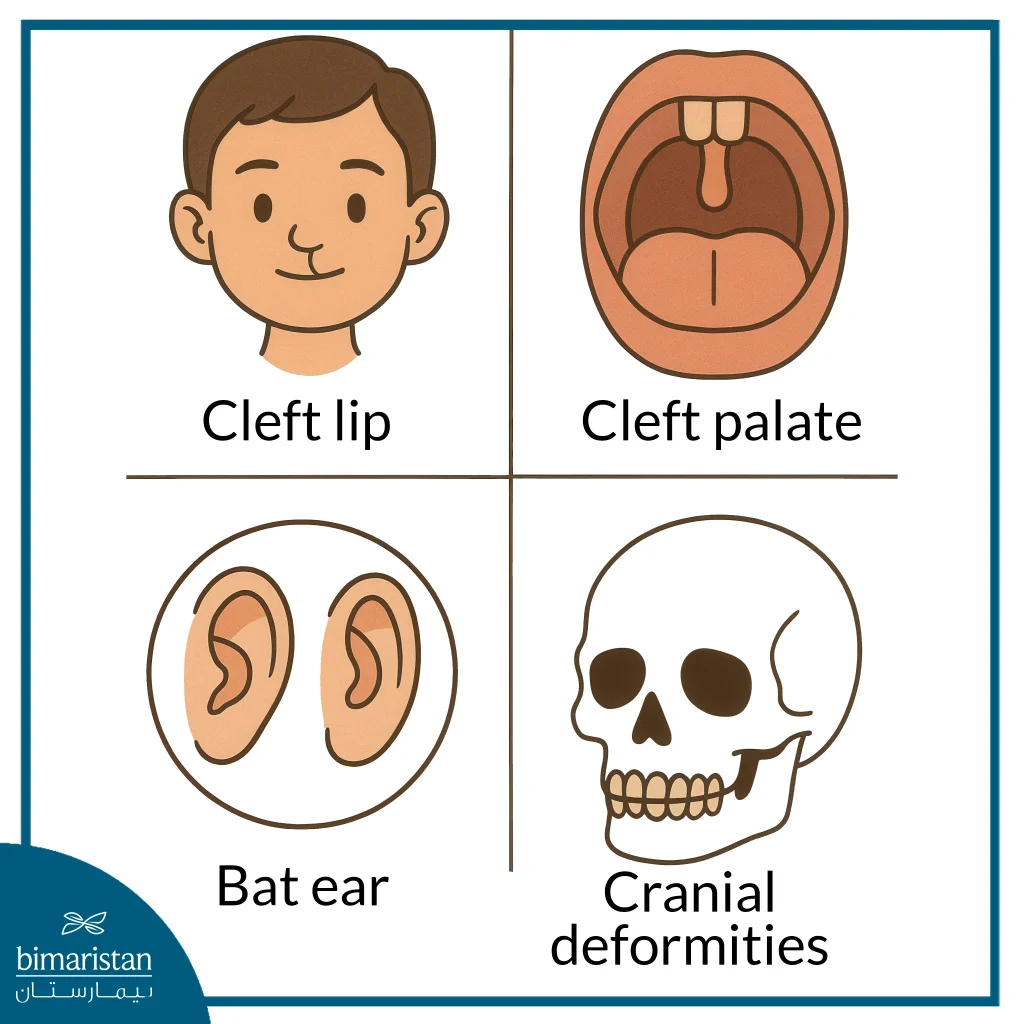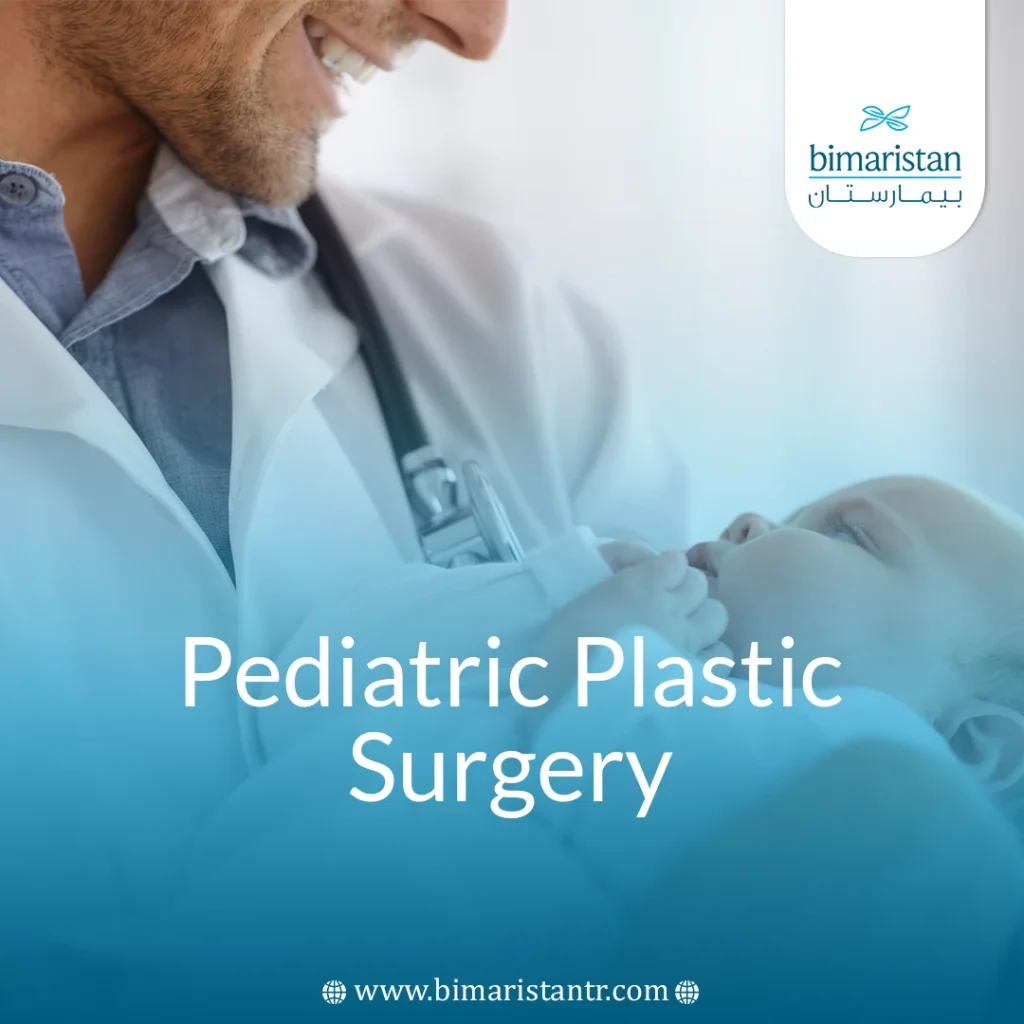In a world that is increasingly concerned with quality of life, pediatric plastic surgery is a vital option for correcting congenital and acquired deformities. Studies show that 85% of these operations are performed with complete success, while parental satisfaction reaches 92%. These surgeries are performed using the latest technology and adhere to the highest international safety standards.
What is pediatric plastic surgery?
Pediatric plastic surgeries are specialized procedures that merge principles of plastic and pediatric surgery to correct congenital or acquired deformities in children from birth to adolescence. Unlike adult surgeries, these procedures are tailored to consider the child’s future growth and the psychological impacts on both the child and their family. The anesthesia used in pediatric plastic surgery is safe and specifically designed to suit the different stages of a child’s development.
There are two basic types of pediatric plastic surgery:
- Cosmetic surgery: Focuses on improving appearance for aesthetic reasons, excluding those with congenital or medical issues.
- Reconstructive surgery: Aimed to repair congenital or acquired deformities in order to restore normal function.
Many common medical reasons necessitate pediatric plastic surgery, including cleft lip and palate, burns, congenital deformities, scars, and prominent ears.
When does a child need plastic surgery?
Reconstructive surgeries are often necessary, and most are performed in early childhood:
- Congenital malformations: There are many types of congenital malformations, and they differ significantly in terms of the age of the procedure, the most important of which are:
- Cleft lip: Repaired in children 3-6 months of age.
- Cleft palate: The child typically undergoes surgery between 9 and 18 months of age.
- Ear deformities: Performed in late childhood at the age of 6-8 years.
- Craniofacial deformities: Surgery is performed in early childhood to prevent issues with brain development, typically within the first year of life.
On the other hand, cosmetic surgery is considered non-emergency, and is often postponed until the child is fully developed, and may reach adolescence, or even adulthood, until they reach an age where they can make their own decisions.

Types of pediatric plastic surgery
Pediatric plastic surgery is categorized into several types based on the purpose and location of intervention, with goals ranging from reconstructive to cosmetic. These types differ in terms of procedure method, surgical objective, or cost.
Cleft lip and palate
One of the most common congenital malformations, it occurs when the tissues of the mouth or palate do not fully fuse during fetal development and is surgically repaired in early childhood.
Prominent ear
It is a common congenital malformation that may affect a child’s self-confidence. It is caused by incomplete flexion of the ear cartilage in the fetal stage. The ideal time to perform it is before the child enters school, to avoid possible psychological issues that he may face at school.
Burns
This condition requires immediate medical intervention. Dead tissue needs to be cleaned and removed. Ointments and antibiotics are applied to prevent infection. Afterward, the affected area is grafted with a layer of healthy skin taken from the back or thigh, and, in some cases, artificial skin may be used.
Correction of skin defects or birthmarks
Pediatric plastic surgery aimed at correcting skin defects and birthmarks demands a high level of precision that differs from adult surgery. This is due to the need to consider the child’s growth and psychological development. Such surgeries are typically not recommended unless the condition poses a risk of cancer, causes a functional deformity, or leads to psychological issues for the child.
How is pediatric plastic surgery performed?
Pediatric plastic surgery is performed through precise steps that take into account the child’s physical and psychological development:
- Preparation for surgery: At this stage, the patient undergoes a thorough evaluation through blood tests, imaging of the affected area, and consultation with a specialized pediatric anesthesiologist. Psychologically, the doctor must explain to the child in simple language what will happen to their body.
- Surgery day: It starts with general anesthesia and is done either by conventional, laparoscopic, or laser surgery.
- Recovery after surgery: The critical period is the first 72 hours following the procedure, during which pediatric painkillers are administered for pain relief and antibacterial dressings are applied.
The sequence of these steps is essential for successful surgery and protection from complications.
Is pediatric plastic surgery safe?
Pediatric plastic surgery is considered a safe medical procedure when conducted by a specialized medical team. However, like any surgical intervention, it carries certain risks, including allergic reactions, postoperative nausea and dizziness, bleeding, and, in rare cases, infection. In some situations, additional surgery may be required after the child’s growth is complete.
Carrying out such procedures in accredited and reputable medical centers provides reassurance to parents and enhances patient safety. This, however, necessitates the presence of qualified and experienced medical teams, established protocols for handling complications, and psychological support programs tailored for both parents and children.
The cost of pediatric plastic surgery in Turkey and the Arab world
The cost of pediatric plastic surgery varies depending on the type of procedure, its complexity, and the required postoperative hospital stay. In Turkey, the cost typically ranges between $2,000 and $13,000. Turkey offers a blend of international medical expertise and competitive pricing compared to European countries and the United States. The Arab world has also become increasingly prominent in this field, offering high levels of expertise and cost-effective options in certain countries.
For instance, treatment costs in Egypt range from $2,000 to $8,000, in Saudi Arabia from $4,000 to $14,000, and in Syria from $1,000 to $4,000. However, the quality of care in Arab countries may vary depending on the hospital and medical staff, making it essential to choose the treatment center with care.
Tips after surgery
After any plastic surgery, parents must take proper care of their children to ensure a quick recovery and avoid any possible complications, and some of the most important tips are:
- Rest, sleep, and prevent children from violent activities
- Good nutrition and plenty of fluids
- Good wound hygiene
- Manage pain by administering prescribed painkillers in the prescribed dosage and not exceeding the prescription limit
- Protect the surgical area with bandages or headbands
- See a doctor immediately for symptoms such as fever above 38 degrees, redness, swelling, purulent discharge from the wound, unexpected bleeding, or the child’s refusal to eat and play
Ultimately, pediatric plastic surgery represents the hope of restoring both beauty and function through a compassionate, human-centered approach. At Bimarestan Medical Center, we craft your child’s success story with skilled hands and hearts that truly understand your needs.
Sources:
- American Society of Plastic Surgeons. (2023). Pediatric plastic surgery overview
- Stanford Children’s Health. (2021). Ear reshaping surgery (otoplasty) for children
